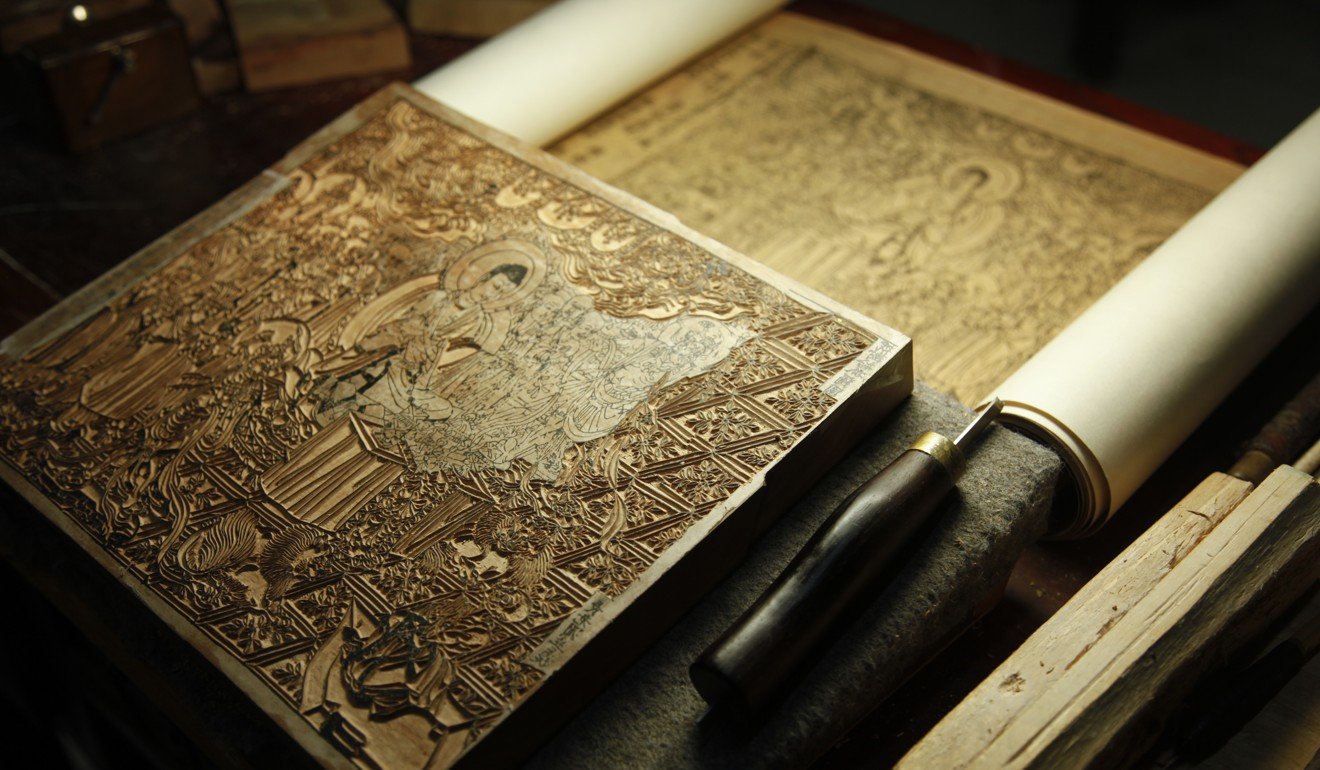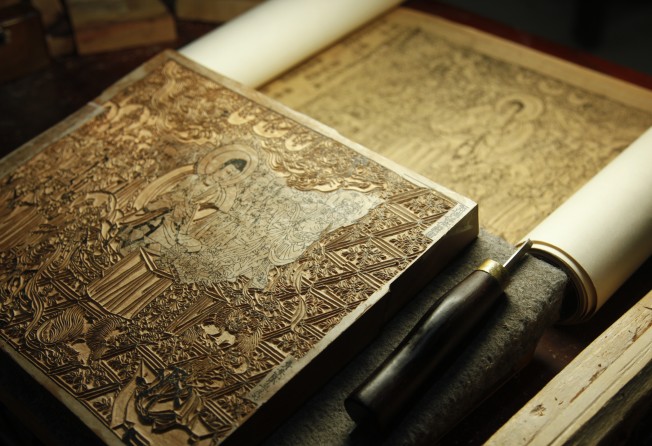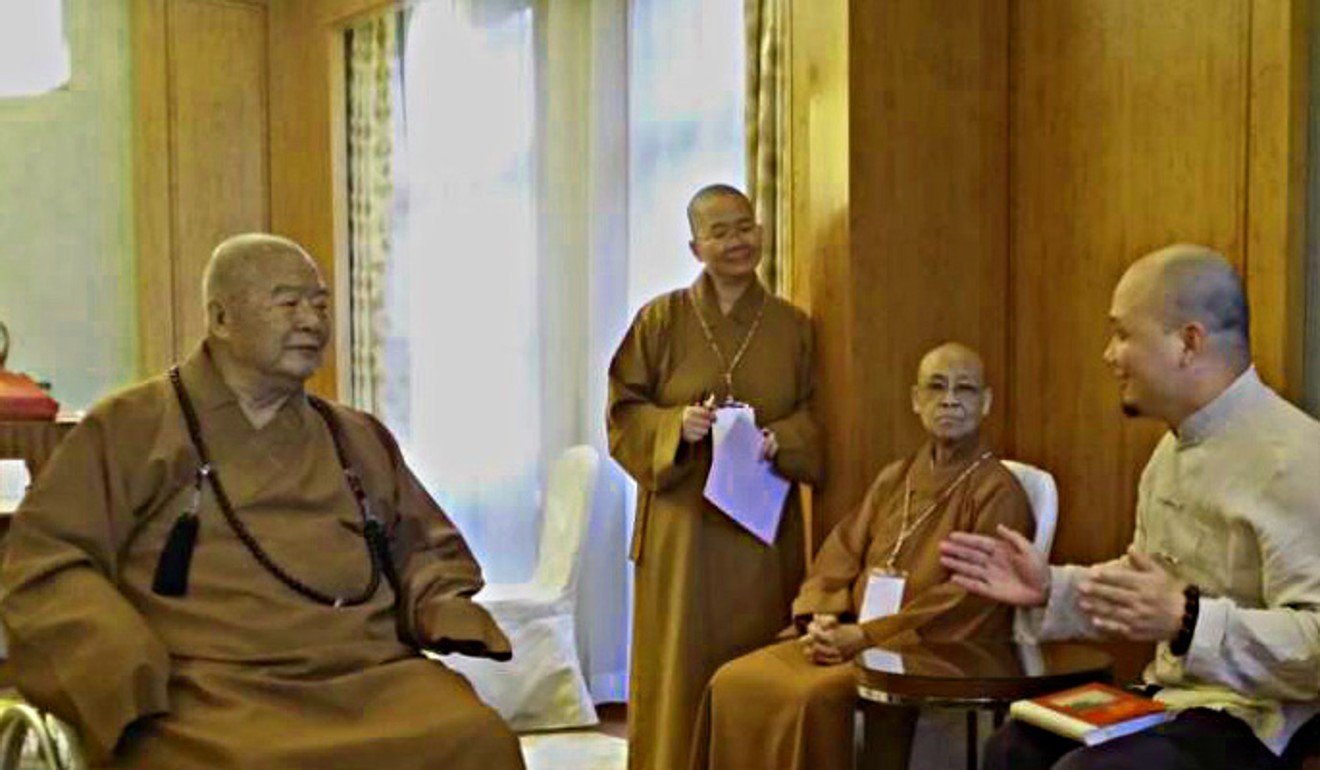
‘When the Chinese invented printing, Westerners were using parchment’: woodblock printer celebrates power of an enduring art form
In the digital age of instant everything, Wei Lizhong is dedicated to keeping alive an art form whose practitioners can take years to produce a single print. An exhibition of his work opens in Beijing this week

For Wei Lizhong, nothing better reflects the ingenuity and resplendence of ancient Chinese civilisation than woodblock printing.
“With a thousand-year history, printing is one of the four great Chinese inventions. When the Chinese invented printing, Westerners were using parchment. When we did woodblock printing with colours, they were doing only monochrome printing,” he says.
To this day, Wei says, it remains superior to modern printing.
“Modern printing can never compare with ancient woodblock printing. The colours produced by the mineral inks we use are very pure, unlike those produced by modern printers’ ink. The paper we use is very light [and cannot be used in a machine].”
An exhibition of more than 200 of Wei’s works – including paintings and seals – opens at the National Art Museum of China in Beijing this week.
For all the history behind the art form, Wei says he has incorporated modern elements into it to strike a chord with contemporary society.

Among his works with popular culture resonance is a wide collection of seals showing the faces of famous people, such as former US president Barack Obama and leader of the Indian independence movement Mahatma Gandhi.
“I have learned Western oil painting, so I can make a portrait of a person very quickly. I think it’s meaningful to carve a person’s image on wood,” he says.
Wei, who is from Hangzhou in eastern China, has practised woodblock printing for 30 years, and is an avid promoter of the art. His Ten Bamboo Studio, which he opened in Hangzhou in 2001, has more than 10 woodblock printing masters dedicated to education.
The graduate of the Zhejiang Academy of Fine Arts has also set up scholarships named after him and his studio at the China Academy of Art in Hangzhou and, in June this year, at the Prince's School of Traditional Arts in London to encourage young people to take up the art form, part of China’s intangible cultural heritage.
I always wanted to carve the sutra, as it’s the oldest dated printed book in the world
He sees it as his mission to preserve woodblock printing among the younger generation, who, with all the digital printing tools at their fingertips, might balk at an ancient method that can take years to produce a print. An artist must first draw the image they want to print, then carve the image into woodblocks, then print it by hand.
The world’s oldest dated printed book is a Chinese woodblock printed scroll containing the text of the Diamond Sutra, made in the 9th year of the Xiantong period of the Tang dynasty (AD868). It is kept in the British Library.
“I always wanted to carve the sutra, as it’s the oldest dated printed book in the world. [British archaeologist] Sir Marc Aurel Stein found it [in the Mogao Caves of Dunhuang in northwest China] and the UK has copyright to it,” he says.
“I tried to talk to the UK [about making an artwork based on it]. But my English was not good. Later, I saw a copy of it in the National Library of China. I talked to its management and they eventually agreed to let me do it.”

Wei made a woodblock print based on the copy and the Zhejiang provincial government presented it to Chinese Buddhist monk Hsing Yun when he visited Hangzhou in 2014.
“Master Hsing saw the sutra [artwork] and liked it. The next day, he asked me to go to the Four Seasons Hotel where he was staying to meet him. The same day, he sent [another] monk to visit the Ten Bamboo Studio,” Wei says with pride.
Wei Lizhong’s exhibition on Ten Bamboo Studio artworks will run from September 5 to 16 at National Art Museum China in Beijing